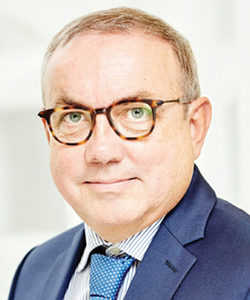 While the current European Clean Energy package negotiations aim to extend the Union's ambition in terms of energy transition, with more important objectives than those of the energy and climate package of December 2008 and its famous "3×20" (20% renewables in the energy mix, 20% reduction in CO2 emissions and 20% improvement in energy efficiency by 2020), they also intend to reshape the entire energy market, taking into account climate issues, the current digital energy revolution, and societal changes in respect to energy.
While the current European Clean Energy package negotiations aim to extend the Union's ambition in terms of energy transition, with more important objectives than those of the energy and climate package of December 2008 and its famous "3×20" (20% renewables in the energy mix, 20% reduction in CO2 emissions and 20% improvement in energy efficiency by 2020), they also intend to reshape the entire energy market, taking into account climate issues, the current digital energy revolution, and societal changes in respect to energy.
Under this new market architecture emerging within the Energy Union, one of the political priorities of the current Juncker Commission, the role of one energy sector player has been particularly emphasized.
With the widespread expansion of renewable, diffuse and decentralised energies, the debate on infrastructures has moved, in less than ten years, from upstream (namely, the major electricity transmission networks, security of supply guarantors, and essential architects of the opening up of transnational markets) to downstream (electricity distribution networks). The Clean Energy Package specifically focuses on Distribution System Operators (DSOs), in recognition of their central role as neutral system operators thus facilitating the functioning of European exchanges.
With the proliferation of new, diffuse and decentralised sources of production, the development of storage, energy efficiency, erasure and electric vehicles, as well as local considerations and the expectations of local authorities regarding more autonomous and renewable models, the distribution networks are clearly in a phase of transition or even revolution.
The distribution networks (i.e. all local low- and medium-voltage networks), which until now served citizens vertically from the very high-voltage network (THT), have in recent years become formidable collection networks, where the main part of wind or photovoltaic energy is connected (95% of renewables are connected to them), produced locally accross hundreds of thousand of sites. At the same time, they allow for greater demand side integration, support consumers in their quest for greater efficiency and energy savings and provide them with more and more intelligent and intelligible data.
With the arrival of smart metering devices, such as Linky in France, the distribution networks will more and more manage a considerable volume of data. This data will be relayed back to consumers and all local or regional decision-makers, who are keen to become actors in the energy transition. Increasingly "smarter", they are also the digital interface needed to support new uses by European citizens (electric vehicles, connected homes, etc.) within "smarter" local areas.
Electricity networks though, are not just technical or economic entities. They are also part of a broader vision of society. The Energy Union cannot be the mere addition of self-contained "local energy clusters" with a self-sufficient vision aimed at protecting themselves from their neighbours. Both historically and in the future, electricity networks were and will remain formidable vectors of solidarity: between Member States, European regions and territories, in all their diversity.
At a time when the Union is seeking to strengthen its proximity to European citizens, on the eve of the European elections, a European policy on energy infrastructure is possible. Let us take it forward with determination and ambition!
Contact information
Djémila BOULASHA, Head of European Public Affairs
Email: djemila.boulasha@enedis.fr
Mobile: +33.6.07.51.74.47
Website: www.enedis.fr
* Enedis manages the public electricity distribution network for 95% of continental France